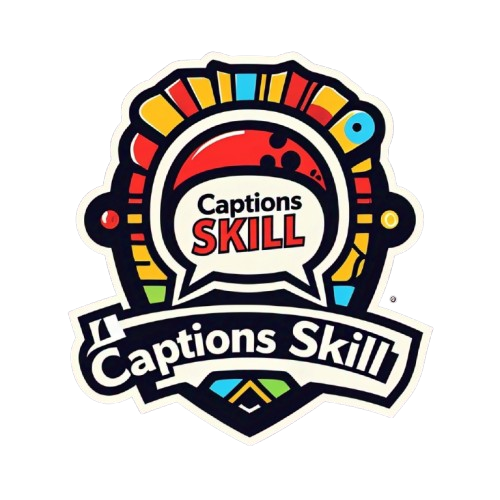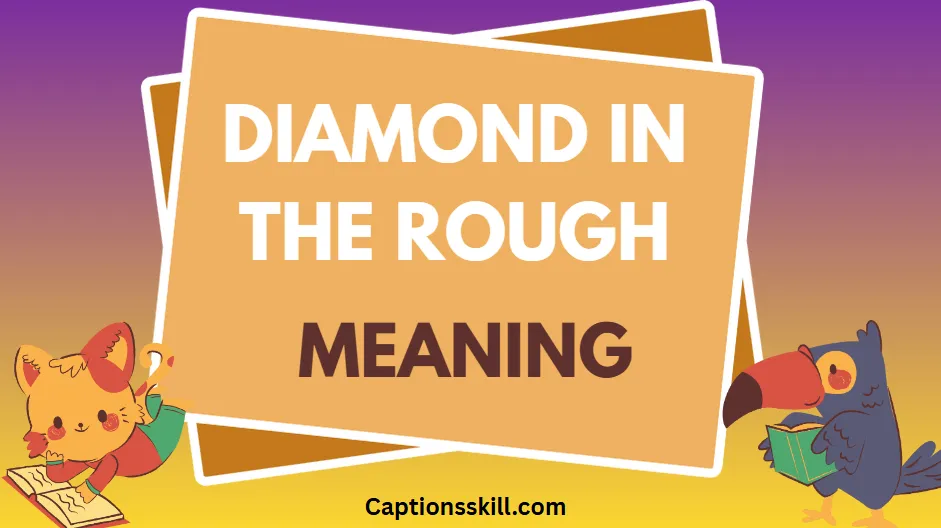The phrase “diamond in the rough” is a timeless expression that has captured the imagination of generations. It’s more than just words—this phrase carries a deep message about hidden potential, inner beauty, and the value that may be concealed beneath an unpolished surface. People use it to describe individuals, places, ideas, or even situations that might not look perfect at first but have outstanding promise when given the right care and attention.
The beauty of this idiom lies in its simplicity. Even a child can understand that a diamond, though rough and dull at first, becomes something incredibly valuable and brilliant once it’s polished. This comparison makes it easier to describe people who may not seem exceptional on the outside but hold remarkable talent, kindness, or strength within.
Over the years, the phrase has been used in everyday speech, movies, books, and even spiritual teachings. It resonates with those who believe in growth, transformation, and second chances. Whether you hear it in a classroom, a boardroom, or a Disney movie, “diamond in the rough” always points toward hope and hidden value.
In this article, we’ll explore the diamond in the rough meaning, where the phrase comes from, how it is used in different settings, and why it remains such a powerful and positive expression in language and life.
What Does “Diamond in the Rough” Mean?
The phrase “diamond in the rough” refers to something or someone that has great potential but is not yet fully developed, polished, or refined. Just like an actual diamond found in nature, it might look dull and unremarkable at first. But with time, effort, and care, it can be shaped into something truly precious.
This expression is often used to describe people who may not appear impressive on the outside but have qualities that make them special deep inside. These individuals may need guidance, education, or life experience to show their true worth. For example, a young student who struggles in school might be called a diamond in the rough if a teacher sees that the student has deep intelligence or creativity that needs nurturing.
It can also apply to places or ideas. A rundown neighborhood that has charm and a strong community spirit may be seen as a diamond in the rough. A small startup with big potential might earn the same label before becoming successful.
In every use, the key idea is hidden value waiting to be revealed. That’s why the phrase feels hopeful and uplifting—it focuses on what could be, not just what is.
The Origin and Evolution of “Diamond in the Rough”
The phrase “diamond in the rough” has been around for centuries. Its earliest known use can be traced back to the 1600s. The idea came from the natural state of diamonds. When diamonds are first mined, they are not shiny or smooth. They have rough edges and look like regular rocks. Only after being cut and polished do they sparkle and gain their high value.
Writers and poets in the 17th and 18th centuries began using the term to describe people or things that had untapped potential. Over time, the phrase became part of common English language, especially in literature and speeches that talked about personal growth and transformation.
One popular moment that helped the phrase spread widely was the use of the term in William Shakespeare’s works. While he didn’t use the exact phrase, he often spoke of characters who seemed simple or flawed but turned out to be noble or gifted—very much like a diamond in the rough.
Today, the phrase is still evolving. It’s used across various fields including business, education, relationships, and media. It has become a universal way to express belief in hidden greatness.
Is “Diamond in the Rough” a Slang, Acronym, or Name?
The term “diamond in the rough” is not a slang word or an acronym. It is a metaphor—a figure of speech used to explain an idea through comparison. It is a descriptive phrase that draws from the image of a real, uncut diamond to describe someone or something that is valuable but not yet refined.
While it is commonly used in casual speech, it is not considered informal or slang. You can hear it in professional environments, literature, or formal writing as well. People use it in job interviews, motivational talks, and educational settings to describe emerging talent or potential.
It is also not a proper name or brand, although the phrase has been used in titles of books, businesses, and media content. For example, some coaching companies or blogs use the name “Diamond in the Rough” to express their mission of helping people uncover their strengths.
So, while it sounds modern and expressive, “diamond in the rough” is not a slang or coded message—it is a poetic and powerful metaphor.
“Diamond in the Rough” Pronunciation & Spelling
The phrase “diamond in the rough” is simple to say and spell. Let’s break it down:
Pronunciation:
Diamond – /ˈdaɪ.mənd/
In – /ɪn/
The – /ðə/ or /ðiː/ (depending on how it flows in the sentence)
Rough – /rʌf/
When spoken together, it sounds like:
“DAI-mund in the ruff”
Even though “diamond” is spelled with an “a,” the first part sounds like “dye.” “Rough” ends with the /f/ sound, even though it’s spelled with “gh.” This is typical in English, where spelling and pronunciation often differ.
The phrase is always spelled the same way. Some people may shorten or stylize it in creative writing, but the formal version remains “diamond in the rough.” It’s easy to spell once you remember that “diamond” and “rough” are the two main parts, joined by “in the.”
Understanding the pronunciation helps speakers sound more fluent, and knowing the correct spelling ensures the phrase is used accurately in writing.
How People Use “Diamond in the Rough” Today
In today’s world, the phrase “diamond in the rough” is used in many different areas. People use it in everyday conversations, social media, books, and even movies. It’s a popular way to describe potential and growth.
In schools, teachers may use this phrase when they talk about students who seem quiet or struggle but have deep talents. In sports, coaches may use it to describe a player who isn’t the best yet but has the passion and drive to improve. Employers use it when hiring people who might not have a perfect resume but show promise.
On social media, people use it to describe places they discover that are beautiful but not yet famous—like a hidden beach or a small local restaurant. The idea is that these places are valuable but not yet popular.
In the world of love and friendship, calling someone a diamond in the rough can be a compliment. It means you see their good heart, even if others don’t notice it right away.
One of the most famous uses of this phrase is in the Disney movie Aladdin. The main character, Aladdin, is called a diamond in the rough by the Cave of Wonders. Though he lives on the streets and appears poor, he has a kind heart and strong spirit, which makes him worthy.
From job interviews to storytelling, the phrase is still very alive in today’s language.
Examples of “Diamond in the Rough” in a Sentence
- She may be shy, but I believe she’s a diamond in the rough.
- That old café on the corner is a real diamond in the rough.
- He was a diamond in the rough when he started, but now he’s our top player.
- The town may look small, but it’s a diamond in the rough.
- This manuscript needs work, but it’s a diamond in the rough.
- Don’t judge him by his background—he’s a diamond in the rough.
- Her singing voice is like a diamond in the rough.
- The abandoned building is a diamond in the rough waiting for a makeover.
- That student has potential—definitely a diamond in the rough.
- I see myself as a diamond in the rough, still learning and growing.
- The startup is small now, but it’s a diamond in the rough.
- My grandmother’s recipe book is a diamond in the rough of family history.
- The artwork looks simple, but it’s a diamond in the rough.
- His ideas are raw but brilliant—a diamond in the rough.
- She’s a diamond in the rough with a bright future.
- The novel is a diamond in the rough with great characters.
- They called him a diamond in the rough for his natural charm.
- Their friendship was a diamond in the rough, full of surprises.
- His designs may be unrefined, but he’s a diamond in the rough.
- That new actor is a diamond in the rough—just wait and see.
Other Possible Meanings of “Diamond in the Rough”
Although the main meaning remains consistent, people may use “diamond in the rough” in different ways. In some cases, it can mean someone who doesn’t follow social norms or who appears rough in behavior but has good intentions.
In literature or movies, it might hint at a character who doesn’t fit into traditional roles but becomes a hero. In spiritual or self-help contexts, it can be used to describe a soul or person undergoing a journey of self-discovery.
Sometimes, the phrase is also used humorously, describing something that’s clearly not great but with a bit of irony. For example, someone might say, “Well, that burnt toast is a diamond in the rough,” just to make a bad breakfast sound more fun.
The deeper idea is always about seeing the good in something that doesn’t seem perfect at first glance.
Words and Acronyms Related to “Diamond in the Rough”
Several phrases carry similar meanings:
- Hidden gem – something valuable that’s not widely known
- Underdog – someone expected to lose but may surprise everyone
- Rough cut – an unedited or early version of something with potential
- Unpolished talent – someone skilled but not yet trained
- Raw potential – ability that’s not fully developed yet
- Dark horse – someone who suddenly rises to success
While these aren’t direct synonyms, they all reflect the same core idea of hidden worth or unrefined excellence.
Is “Diamond in the Rough” in the Dictionary?
Yes, the phrase “diamond in the rough” is included in many English dictionaries. It is classified as an idiom—a set of words that together mean something different than the literal meanings of the individual words.
According to the dictionary, it means “a person or thing with exceptional qualities or potential but lacking refinement or polish.” This matches the way it is used in most conversations and writing.
Dictionaries such as Merriam-Webster, Cambridge, and Oxford have all included it as a recognized expression. It’s also used in thesauruses and educational materials to help learners understand idioms.
Better Alternatives to Say “Diamond in the Rough”
If you want to say something similar but with different words, here are some phrases that work:
- Hidden gem
- Untapped potential
- Work in progress
- Uncut jewel
- Sleeping talent
- Raw diamond
- Future star
- Buried treasure
Each of these can be used depending on the context. For example, “hidden gem” is often used for places or things, while “untapped potential” may suit a business setting.
Also Read About; ooo meaning

Jean Moreau is a talented writer known for crafting engaging captions that resonate with audiences. His creativity enhances social media content effectively.






Leave a Reply